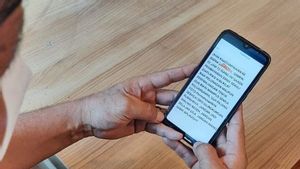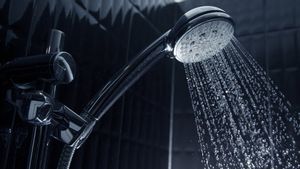JAKARTA - Shopping addiction or shopaholic is an addiction behavior that involves compulsive purchases as a way to feel happy and avoid negative feelings, such as anxiety and depression. Like other addiction behavior, shopaholics can cause life problems.
According to a study reported by Very Well Mind, Wednesday, October 2, almost everyone has a certain level of shopping. But only about 6 percent of the US population is expected to have shopaholic syndrome.
Although consumerism has increased recently, shopping addiction is not a new disorder. Shopping addiction has been known since the beginning of the nineteenth century and is referred to as a mental disorder in the early twentyth century.
A person can be said to have a shopaholic disorder if he shows the characteristics of behavior;
People who struggle with spending addiction usually spend more time and money shopping. So that not a few people experience financial problems due to excessive spending.
Shopping addiction involves impulsive and compulsive spending, which results in temporary joy. People who are addicted to shopping often feel empty and dissatisfied with their purchases when they get home. And usually, the items purchased are often stockpiled without use.
The cause of shopping addiction behavior is still unclear. But some of the following factors can play a role, such as;
Usually starting at the end of adolescence and early childhood, shopaholics often coincide with other disorders, including mood disorders and anxiety, substance use disorders, eating disorders, impulse control disorders, and personality disorders.
Difficulty controlling the desire to shop arises from the personality patterns that are owned by shopaholics, and those that distinguish them from others. Often have low self-esteem, they are easily influenced, and often are kind, sympathetic, and polite to others, even though they are often lonely and isolated. Shopping gives them how to find contact with others. Some people develop shopping addiction to try to increase their self-esteem, although this tends to be less effective.
SEE ALSO:
People with shopping addiction tend to be more adventurous than other buyers and try to shore up themselves by seeking status through material objects and getting someone else's recognition. They are more common and just like people with addiction, having difficulty holding back encouragement.
Shopaholic is more vulnerable to marketing and advertising messages. While ads, in general, are designed to exaggerate over the positive outcomes of purchases and suggest that purchases will lead to escape from life problems, certain marketing tricks are designed to trigger impulsive purchases and specifically target the impulsive nature of people addicted to shopping.
Like other addictions, shopaholics are usually a way to deal with pain and emotional difficulties in life. Unfortunately, it tends to worsen the situation than to fix it.
People who get pleasure and escape negative feelings through spending sometimes call it "steed therapy." This phrase implies that one can get the same benefits of buying something for oneself as it gets from following counseling or therapy. This is a wrong idea and doesn't help.
The English, Chinese, Japanese, Arabic, and French versions are automatically generated by the AI. So there may still be inaccuracies in translating, please always see Indonesian as our main language. (system supported by DigitalSiber.id)


















